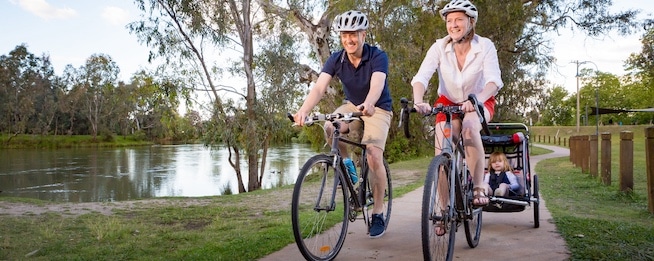The border cities of Albury and Wodonga have teamed up to create a strategy that treats the two adjacent cities as one transport network.
The integrated transport strategy (ITS) is a first for the border region and takes a modern view of transport and its role in developing economies and communities.
The strategy places a significant emphasis on the role of active and sustainable transport as a legitimate choice for local citizens.
Active and Healthy Cities is one of the four key themes of the ITS: "To encourage the use of active transport modes such as walking and riding a bike, the strategy aims to develop safe and accessible walking and cycling infrastructure,” the document says.
"Easy and convenient access to key destinations within and between our cities will promote healthier and more active lifestyles.”
The strategy says that without a new intervention, the two car-dependent cities will experience more vehicle congestion at peak times, have more health and wellbeing problems, emit more emissions and pay a financial cost for more expensive travel.
"Lack of safe active transport infrastructure such as connecting pathways to key destinations and crossing points along busy roads deter people from walking and riding,” the strategy says.
"The cycling environment in Albury Wodonga is underdeveloped, with many gaps in our bike network. Key destinations within city centres are not well connected to existing off-road paths and communities, which reduces the appeal and usability for commuting."
Both the Hume Freeway and the Murray River act as a barrier to active transport because of the lack of crossing points.
Some of the opportunities suggested include:
- Existing open drain networks and creeks can be used to create attractive active transport routes.
- Old rail and/or highway corridors can be used to create attractive active transport routes.
- Greenfield developments can create walkable and rideable neighbourhoods through a mix of land uses, housing types, densities, road configurations, and access to quality public transport.
- Road construction projects incorporate separated on-road cycling infrastructure.
- State-funded street lighting upgrades can make streets safer for people walking.;
- Existing wide neighbourhood streets provide ample space for implementation of active and sustainable modes or transport, tree canopy cover and quality shade.
Or become our friend and subscribe to receive our fortnightly newsletter.


